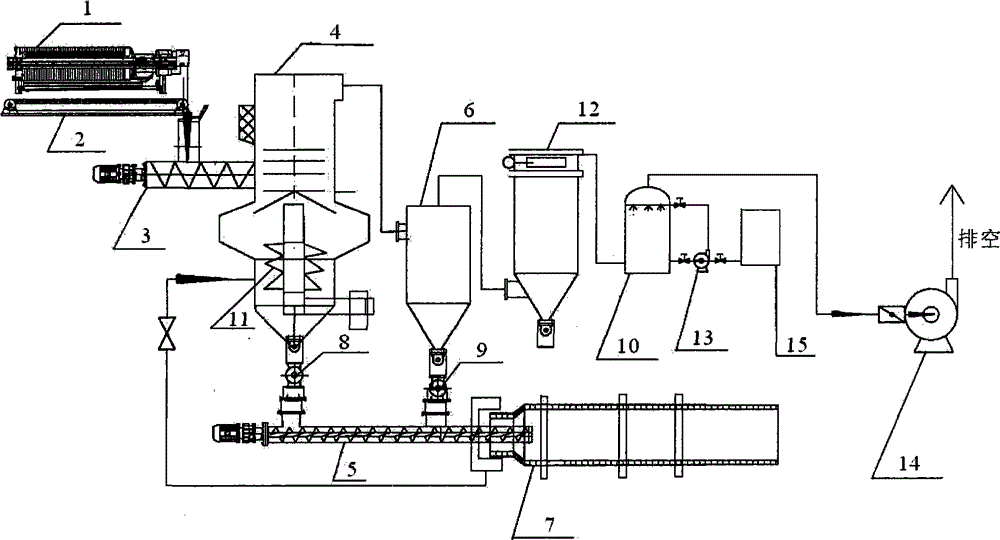Feeding method and feeding equipment for titanium dioxide calcination rotary kiln
A rotary kiln and titanium dioxide technology, applied in the direction of titanium dioxide, titanium oxide/hydroxide, etc., can solve the problems of insufficient utilization of high-temperature flue gas heat, high energy consumption in the calcination process, unstable product quality, etc., and achieve the utilization of calcination equipment The effect of increasing the efficiency, reducing the energy consumption of calcination and shortening the calcination time
- Summary
- Abstract
- Description
- Claims
- Application Information
AI Technical Summary
Problems solved by technology
Method used
Image
Examples
Embodiment Construction
[0026] A method for feeding titanium dioxide to a rotary kiln for calcining comprises the following steps:
[0027] 1. Conveying step: the metatitanic acid material separated and dried by the membrane filter press (1) to a moisture content of 50-55% is fed into flash evaporation via the belt conveyor (2) and the first screw conveyor (3) Drying host (4);
[0028] 2. Flash drying step: the metatitanic acid material entering the flash drying host (4) is in contact with the high-temperature flue gas from the kiln tail. , the material is crushed, dispersed, and dried, and part of the material that falls to the bottom is introduced into the second screw conveyor (5) by the first star discharge valve (8) and then enters the rotary kiln (7);
[0029] 3. Recovery step: dry powdery and small granular materials enter the cyclone dust collector (6) tangentially from the top of the flash drying host with the swirling airflow under the vacuum negative pressure state under the action of the...
PUM
 Login to View More
Login to View More Abstract
Description
Claims
Application Information
 Login to View More
Login to View More - R&D
- Intellectual Property
- Life Sciences
- Materials
- Tech Scout
- Unparalleled Data Quality
- Higher Quality Content
- 60% Fewer Hallucinations
Browse by: Latest US Patents, China's latest patents, Technical Efficacy Thesaurus, Application Domain, Technology Topic, Popular Technical Reports.
© 2025 PatSnap. All rights reserved.Legal|Privacy policy|Modern Slavery Act Transparency Statement|Sitemap|About US| Contact US: help@patsnap.com

